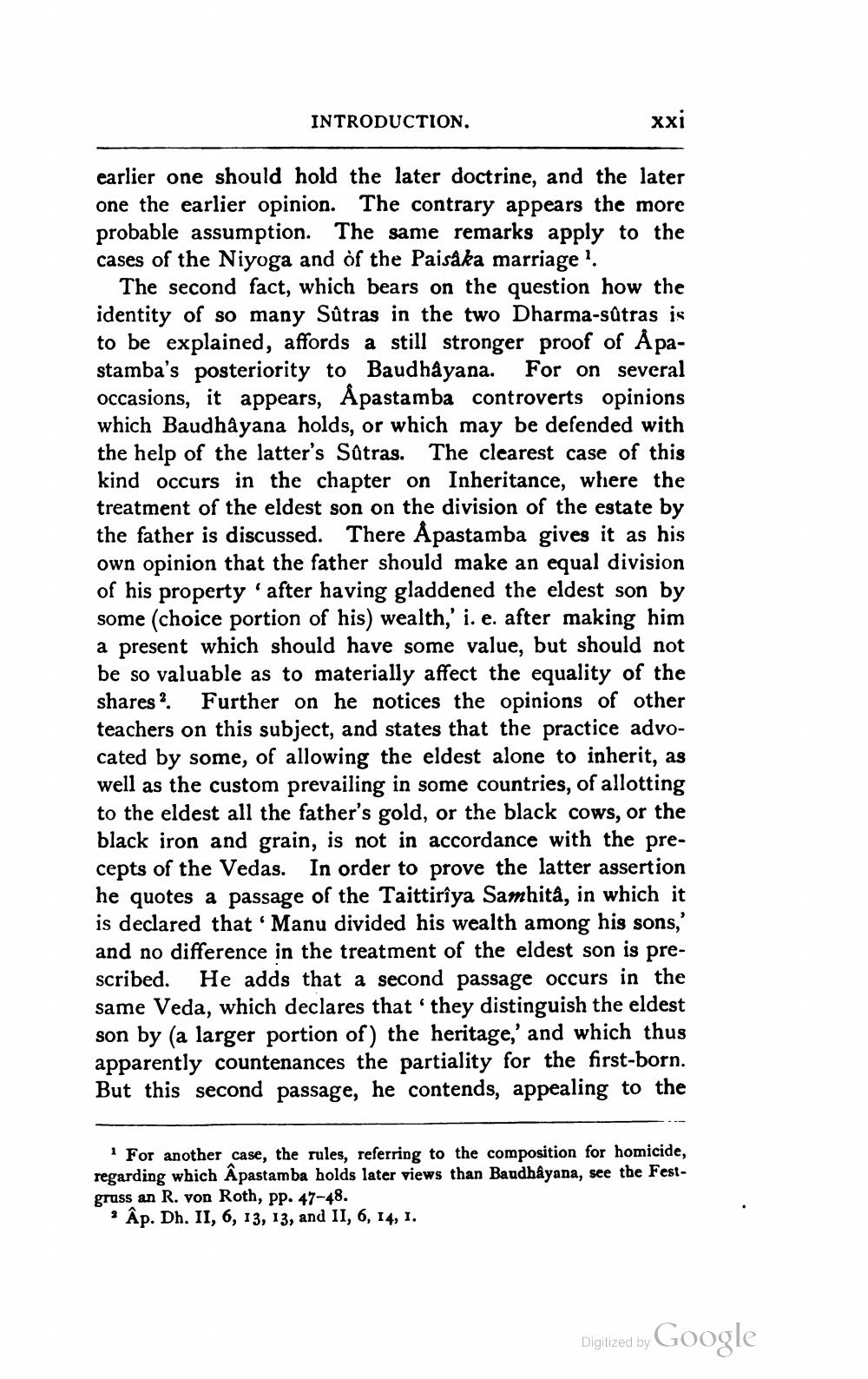________________
INTRODUCTION.
xxi
earlier one should hold the later doctrine, and the later one the earlier opinion. The contrary appears the more probable assumption. The same remarks apply to the cases of the Niyoga and of the Paisâka marriage'.
The second fact, which bears on the question how the identity of so many Sûtras in the two Dharma-sûtras is to be explained, affords a still stronger proof of Apastamba's posteriority to Baudhâyana. For on several occasions, it appears, Apastamba controverts opinions which Baudhâyana holds, or which may be defended with the help of the latter's Sûtras. The clearest case of this kind occurs in the chapter on Inheritance, where the treatment of the eldest son on the division of the estate by the father is discussed. There Åpastamba gives it as his own opinion that the father should make an equal division of his property' after having gladdened the eldest son by some (choice portion of his) wealth,' i. e. after making him a present which should have some value, but should not be so valuable as to materially affect the equality of the shares 2. Further on he notices the opinions of other teachers on this subject, and states that the practice advocated by some, of allowing the eldest alone to inherit, as well as the custom prevailing in some countries, of allotting to the eldest all the father's gold, or the black cows, or the black iron and grain, is not in accordance with the precepts of the Vedas. In order to prove the latter assertion he quotes a passage of the Taittirîya Samhitâ, in which it is declared that ' Manu divided his wealth among his sons,' and no difference in the treatment of the eldest son is prescribed. He adds that a second passage occurs in the same Veda, which declares that they distinguish the eldest son by (a larger portion of) the heritage,' and which thus apparently countenances the partiality for the first-born. But this second passage, he contends, appealing to the
1 For another case, the rules, referring to the composition for homicide, regarding which Âpastamba holds later views than Baudhâyana, see the Festgruss an R. von Roth, pp. 47-48.
2 Âp. Dh. II, 6, 13, 13, and II, 6, 14, I.
Google
Digitized by




